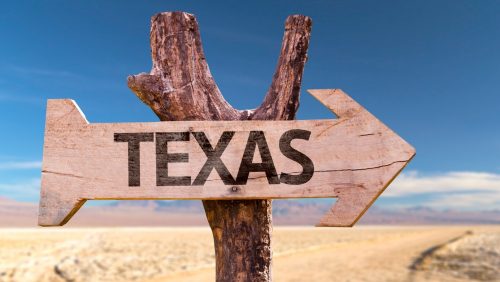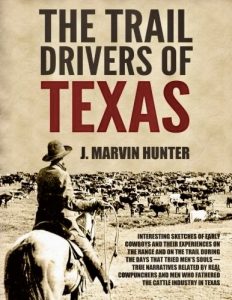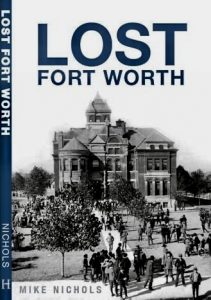Hardwired
The Lone Star State
 Friends and readers have often asked if I would ever set a book in Texas. For years, my standard reaction was to laugh and shoot back with, “Why would I?” Sure, I love where I live in the Lone Star State, but set a book here? After all, what’s so intriguing about living in the Eastern Cross Timbers region of North Texas that a fiction author would set a thriller here? But in the end, that’s exactly what I did. I set book four, CLON-X, in the Dallas-Fort Worth Metroplex.
Friends and readers have often asked if I would ever set a book in Texas. For years, my standard reaction was to laugh and shoot back with, “Why would I?” Sure, I love where I live in the Lone Star State, but set a book here? After all, what’s so intriguing about living in the Eastern Cross Timbers region of North Texas that a fiction author would set a thriller here? But in the end, that’s exactly what I did. I set book four, CLON-X, in the Dallas-Fort Worth Metroplex.
Once I began to research the history of the DFW area, I discovered reasons to do a re-think. The more I learned, the more addicted I became to knowing more about those early settlers who made the Texas Plains their new home. And as a person who has a deep respect for and love of the land – not to mention being an outdoors person – I immersed myself not only in their stories, but also in the knowledge of the land itself.
The Cross Timbers is a forest-grassland ecoregion with both savannah and woodlands of post oak, blackjack oaks, and my personal favorite, the eastern red cedar. Some consider the red cedar to be an invasive species, but my love endures. The oaks in the Cross Timbers area were not considered usable timber, so deforestation wasn’t widely practiced there. As a result, these old-growth forests contained millions of post oaks from 200 to 400 years old and red cedar over 500 years old. In 1835, one early American explorer who forged a path through the Cross Timbers terrain described it “like struggling through a forest of cast iron.”
After the history of North Texas dug its hooks into me, I found myself devouring anything and everything related to the early settlers who called Texas the Lone Star State. Why and how did Texas come by this moniker? Theories abound as to the exact story, but it seems the tale begins south of the border.
When Texas was a province of Mexico, the land that’s known today as the state of Texas encompassed two areas called Coahuila y Tejas. It’s thought that the original flag for this land bore two gold stars in the middle of the red, green, and white stripes of the Mexican flag. Once Texas won its independence from Mexico, the victory resulted in the design of a new flag for the independent Republic of Texas. That first flag, and subsequent variations of it, all featured a lone star, representing defiance, pride and — most importantly — independence, with the red, white, and blue representing, respectively, bravery, purity, and loyalty. All noble traits.
Although we no longer live in a freestanding republic, Texans still pride themselves on their rugged individualism and independent spirit. And as you might expect, the people who are happy to make Texas their home still have that “Lone Star State” spirit.
 Texas joined the Union on December 29, 1845, as the 28th state. I have discovered that, as with so much of history, controversy surrounds even the Texas flag. Who designed it? The Texas State Library and Archives Commission says the flag was designed by Austin artist Peter Krag for $200. Read more about the flag controversies at https://www.kut.org/austin/2016-06-15/why-nobody-knows-who-designed-the-texas-flag
Texas joined the Union on December 29, 1845, as the 28th state. I have discovered that, as with so much of history, controversy surrounds even the Texas flag. Who designed it? The Texas State Library and Archives Commission says the flag was designed by Austin artist Peter Krag for $200. Read more about the flag controversies at https://www.kut.org/austin/2016-06-15/why-nobody-knows-who-designed-the-texas-flag
As someone who’s happy to call Texas home, I find my appetite to learn more about my adopted state has definitely taken hold. Read more about Texas history by starting here https://patkrapf.com/texas-the-german-belt/ Then follow me through the archives of the Lone Star State.
My Current Reads
 At the suggestion of Scott Slinker (https://twitter.com/scott_slinker) who highly recommended The Trail Drivers of Texas, I immediately purchased the book and read it in three days. In Scott’s own words, “Incredible first-hand accounts of the real west and the hardships and experiences they faced.” I was fascinated to learn about the early cowpunchers and their lives on the range. These were the men who fathered the cattle industry in Texas.
At the suggestion of Scott Slinker (https://twitter.com/scott_slinker) who highly recommended The Trail Drivers of Texas, I immediately purchased the book and read it in three days. In Scott’s own words, “Incredible first-hand accounts of the real west and the hardships and experiences they faced.” I was fascinated to learn about the early cowpunchers and their lives on the range. These were the men who fathered the cattle industry in Texas.
From the cattle drivers who faced danger on the plains, including warring Native American tribes, my curiosity led me to Quanah Parker and the town named after the Comanche chief. Quanah, Texas, is located in Hardeman County and is 8 miles south of the Red River which forms the Oklahoma-Texas state line. During one of his visits to Quanah, Chief Parker bestowed his blessing on the town.
“May the Great Spirit smile on you little town, may the rain fall in season, and the warmth of the sunshine after the rain, may the earth yield bountifully. May peace and contentment be with your children forever.”
Searching for a more in-depth account of Quanah life, I bought Empire of the Summer Moon by S. C. Gwynne. Other books I’ve read about the Comanche chief have scratched the surface, but Gwynne’s book expounds on two astonishing stories. One traces the rise and fall of the most powerful Indian tribe in American history, and the second, the epic saga of the most famous Indian captive—a pioneer woman named Cynthia Ann Parker.
Cynthia was born in Illinois in 1827, before the Parker family moved to Texas in 1833 and built Fort Parker east of Waco. In 1836, the fort was attacked by Comanche warriors and young Cynthia was taken captive. She spent twenty-four years with the tribe and during that time married Peta Nocona, a Comanche chief. They had two sons and a daughter. Their eldest son was named Quanah. Cynthia had several opportunities to leave the Comanches but refused. At one point, she was abducted by Texas Rangers and returned to her white family, but was unhappy and struggled to adapt to the white man’s world. A number of times she tried to escape back to her Comanche tribe, but failed. Her story is one of hardship but, like many pioneers of the time, also one of happiness.
Gwynne’s exhilarating book covers the many wars fought by the Comanches over four decades, encompasses Spanish colonialism, the American Civil War, the destruction of the buffalo herds, and the arrival of the railroads: the history that shaped Texas and the United States.
 Trail blazers still on my mind, my literary interest circled back to Fort Worth and led to my recent purchase of Lost Fort Worth by Mike Nichols. Mr. Nichols is a fifth-generation Texan who was born near the Fort Worth Stockyards. He worked for the local newspaper, the Fort Worth Star-Telegram, for twenty-three years. At age 62, he began to chronicle the history of Fort Worth from his seat on a bicycle with his camera slung around his neck. In his own words, “I went to work for the Star-Telegram, traveled all seven continents, and I came back home thinking that Fort Worth is a really interesting place.”
Trail blazers still on my mind, my literary interest circled back to Fort Worth and led to my recent purchase of Lost Fort Worth by Mike Nichols. Mr. Nichols is a fifth-generation Texan who was born near the Fort Worth Stockyards. He worked for the local newspaper, the Fort Worth Star-Telegram, for twenty-three years. At age 62, he began to chronicle the history of Fort Worth from his seat on a bicycle with his camera slung around his neck. In his own words, “I went to work for the Star-Telegram, traveled all seven continents, and I came back home thinking that Fort Worth is a really interesting place.”
Lost Fort Worth synopsis: “Fort Worth began as a frontier Army camp and grew into a city as cattle drives, railroads, the stockyards and packing plants, oil, and national defense drove its economy. During the tremendous growth, the landscape and cultural imprint of the city changed drastically, and much of Cowtown was lost to history.”
But in Lost Fort Worth, we can “Join author Mike Nichols on a stroll down Memory Lane from the cattle pens on the North Side to the Battle of Buttermilk Junction on the South Side, from Randol’s mill on the East Side to the Army’s Camp Bowie on the West Side. Witness the birth of Western swing music and the death of a cloud dancer. See mansions of the well-heeled and saloons of the well-armed. Meet Butch Cassidy and the Sundance Kid, Clyde Barrow and Rube Burrow, Sisters of Charity and ladies of the evening. Along the way you’ll also pass four trolley parks, three World War I airfields, two gunfighters, one flamboyant preacher, one serial killer, and one very short subway that carries readers back in time to Lost Fort Worth.”
After reading Nichols’s book, I wanted to learn more about the author and Fort Worth’s history, so I logged onto his blog, Hometown by Handlebar: https://hometownbyhandlebar.com/
Sadly, Mike Nichols passed away on March 5, 2023, at the age 74 of complications from cancer.
Book Reviews
 I appreciate all the book reviews I’ve received over the years for my Darcy McClain and Bullet Thriller series. But for a moment, I’d like to concentrate on one in particular that caught me by surprise.
I appreciate all the book reviews I’ve received over the years for my Darcy McClain and Bullet Thriller series. But for a moment, I’d like to concentrate on one in particular that caught me by surprise.
An acquaintance saw a print ad I had recently run in a local bulletin and was delighted to learn I’m an author. He quickly followed with, “I used to be an avid reader, but since my stroke, my attention span has never been the same. I find it hard to stay focused.” But he assured me he would buy Brainwash and do his best to read the book.
A week later we bumped into each other again. He appeared excited to see me and I wondered why. Sure, we know one another, but he certainly had something on his mind and was eager to share it. With a broad smile on his face, almost bordering on a smug grin, he said, “This is a great book, and I’m back to reading like before my stroke. I couldn’t put the book down.” He was halfway through Brainwash and had purchased Gadgets so as not to break his momentum. I couldn’t have been more thrilled. Not about the book sales, but that the series had helped someone in a most unexpected way.
Three weeks passed and I hadn’t seen him. I grew a bit concerned and asked about him from mutual friends. He was on vacation visiting family in his hometown in North Dakota. When we met up again, he had read Genocide and was almost done reading CLON-X. That impressed me, but what touched me the most? He had a thank-you gift for me. And what better than a book from a local author in his home state – Lori L. Orser’s Spooky Creepy North Dakota. What a fitting title right in time for Halloween!
I read it in two days. I loved the haunted stories, but, as I’ve never visited either of the Dakotas, I also found the historical facts about locations and people informative. I had both states on my bucket list and all reservations made for visits. Then Covid hit, derailing those vacation plans. Both states are now back on the list.
A parting comment. In Lori’s book she states: “Like most places, North Dakota has plenty of what would be called urban legends in a more populated state. Here, we call them rural legends. These are stories with only one source, and no one to confirm or disprove them, but whose authenticity as history can only be considered as dubious!”
Her statement regarding authenticity as history certainly hit home, harkening back to my blog post titled “Fact, Fiction, or Contradiction?”

